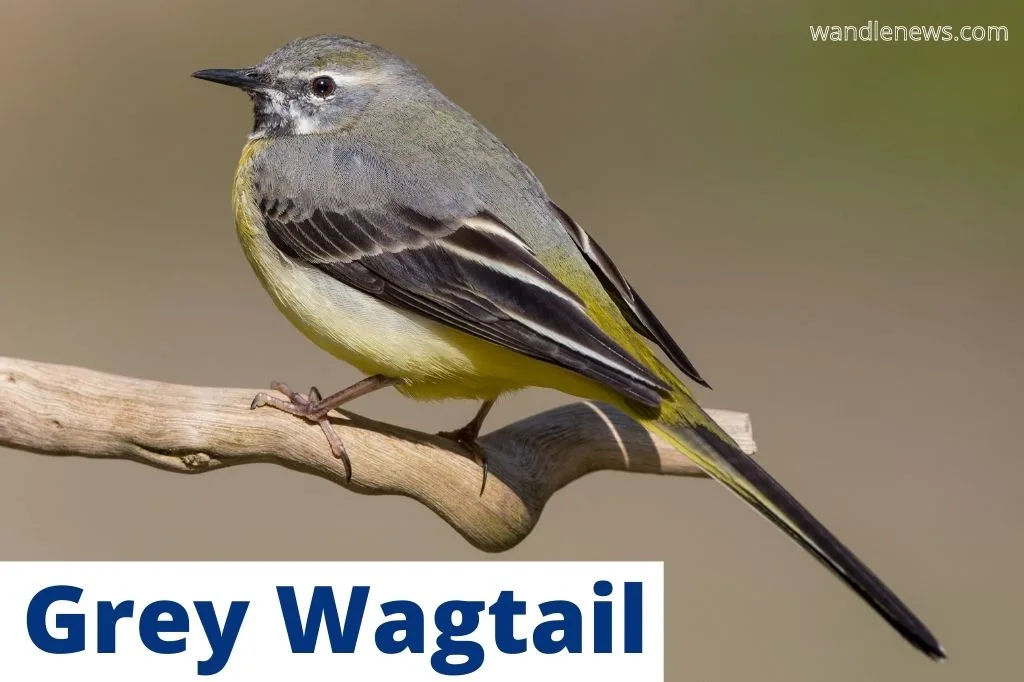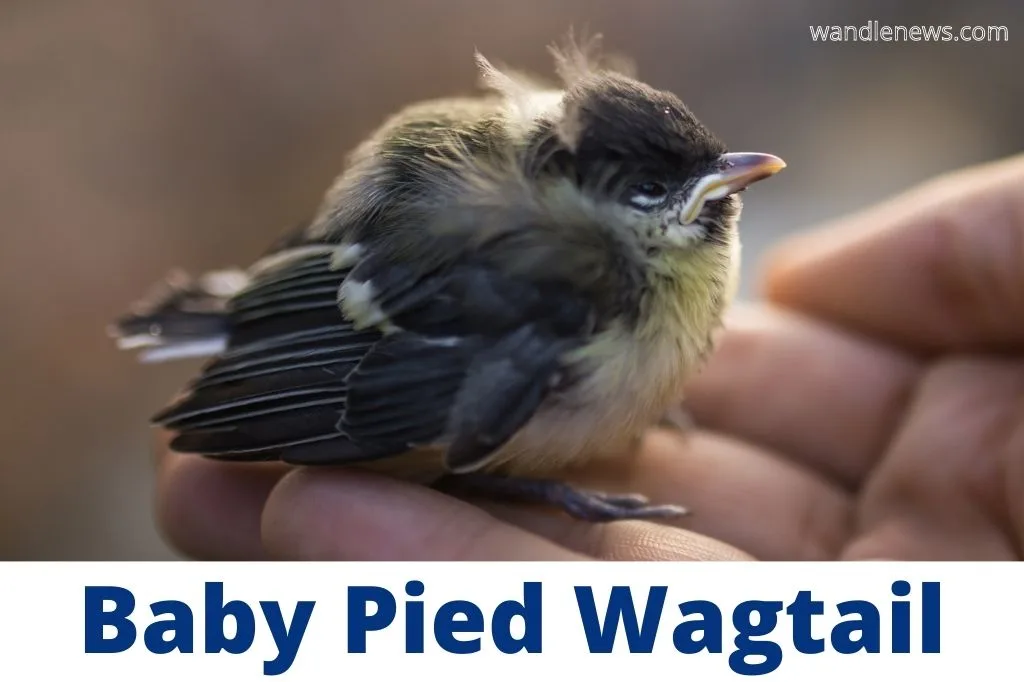Yellow wagtail vs grey wagtail – The yellow wagtail and grey wagtail are quite difficult to tell apart. This is because grey wagtails always have some yellow on them, and yellow wagtails sometimes have no yellow on them at all! To make things even more confusing, a juvenile pied wagtail has a yellow face until it becomes an adult.
When trying to distinguish between a yellow wagtail vs grey wagtail therefore we can’t go by colour alone, but also need to consider the bird’s habitat and call. This post goes through all the differences between these two birds.

Just so you know, some of the links below are affiliate links, so I will receive a small commission (at no extra cost to you) if you buy through the links.
- Bailey, Bill (Author)
- English (Publication Language)
- 240 Pages – 05/17/2018 (Publication Date) – Quercus (Publisher)
Last update on 2025-07-21 / Affiliate links / Images from Amazon Product Advertising API
Yellow Wagtail Vs Grey Wagtail

You can see from the photograph that male grey wagtails have grey backs with yellow under their tails. The male yellow wagtail has an olive green back and a bright yellow belly.
Be aware however that these colours vary depending on whether the bird is a male, female, juvenile, or if it’s during the breeding season.
The 3 Types of Wagtail in the UK
Wagtails are ground dwelling, elongated, horizontal birds with long tails that they wag up and down. In the United Kingdom there are three types of wagtails: the pied wagtail, grey wagtail and western yellow wagtail.
- Pied Wagtail – small black and white bird with a medium-length tail. They are sometimes mistaken for small magpies.
- Grey Wagtail – small bird with a grey back with yellow under its tail. They have the longest tail out of the three.
- Yellow Wagtail – small, yellow and green bird, with a short tail (compared to the other two) and thin black legs.
Wagtails are similar in form to a meadow pipit, but are much longer. The photograph below shows the difference between a pied wagtail and a grey wagtail.
Pied Wagtail Vs Grey Wagtail

How to Tell a Yellow Wagtail & Grey Wagtail Apart
Grey wagtails are a lot more colourful than their name would suggest, and are often mixed up with yellow wagtails due to the yellow on their tails. Grey wagtails have slate grey upper parts and distinctive yellow underneath. Their tails are noticeably longer than those of pied and yellow wagtails.
If you spot a wagtail with yellow on it during the colder months, this is almost certainly a grey wagtail. This is because yellow wagtails are summer visitors only, and fly south for the winter. Yellow wagtails usually arrive in the United Kingdom around April, and are gone by mid October.
Both yellow and grey wagtails are on the list of birds of conservation concern. Both birds were on the red list but the grey wagtail moved in 2021 to the amber list after their numbers were seen to increase.
Before we look in more detail at the grey and yellow wagtails, the basic differences between them are summed up in the table below.
| Yellow Wagtail | Grey Wagtail |
|---|---|
| Usually found in damp grassland, or on marshes or arable land | Usually found near flowing or still water |
| Shorter tail than Pied Wagtail | Longer tail than Pied Wagtail |
| Adults have a bright yellow belly in breeding season | Bright yellow patch under tail all year round |
| Usually has an olive green back | Has a grey back |
| Adult bird never has a dark throat | All adults have dark throats during breeding season |
| Baby yellow wagtails have a dark necklace on their throats | Baby grey wagtails have a pinkish bill and no dark throat |
| Some yellow wagtails have no yellow at all | All grey wagtails have some yellow |
| Call sounds like “se-ip” | Call sounds like “tzeet-tzeet” |
| Only seen from April – October | Seen all year round |
| On the red list of birds of conservation concern | On the amber list of birds of conservation concern |
Yellow Wagtail Vs Grey Wagtail

Yellow Wagtails
The yellow wagtail seen in the UK is the Western yellow wagtail (motacilla flava).
What a Yellow Wagtail Looks Like
Yellow wagtails are seen in the UK during the breeding season when their colours appear much bolder. The male yellow wagtail has a green back and bright yellow belly. The female is a much paler colour and can appear cream coloured or light grey. Both have thin dark legs and a shorter tail compared to a grey or pied wagtail.
Juvenile and winter yellow wagtails look even more washed out, but still have an upper olive colour. They only have a very slightly yellow breast. Some of the very young female birds have no olive or yellow colour at all, and appear grey above and white below.
Yellow Wagtail

Where Yellow Wagtails are Most Commonly Seen
The yellow wagtail is most often seen in central and eastern England, southern Scotland and eastern Wales. They are found in wet meadows, large damp fields or marshland. They are only found in the UK during the summer as they fly to southern Africa for the winter.
What Yellow Wagtails Eat
- Insects
- Beetles
- Flies
Are yellow wagtails rare in UK?
The numbers of yellow wagtails in the UK have been steadily declining. In 2009 they were added to the list of birds of conservation concern. They were put on the red list which contains the birds of highest concern.
Where do yellow wagtails live?
Yellow wagtails like to live in damp habitats like wet grassland, marshes or near rivers. They also are found in arable habitats like crops for barley, oilseed rape, sugar beet and potato.
Grey Wagtails
Grey wagtails (motacilla cinerea) are less common that pied wagtails, but can still be seen all over the UK.
What a Grey Wagtail Looks Like
Grey wagtails have a long tail when compared to the pied and yellow wagtails. They have grey backs, a distinctive lemon coloured patch under their tails, and a black throat during breeding season.
Grey Wagtail

Where Grey Wagtails are Most Commonly Seen
Unlike yellow wagtails, grey wagtails are found in the UK all year round. They can be seen over most of the UK apart from the northern and western isles of Scotland.
Grey wagtails like to live close to fast flowing rivers, and are found at their greatest densities in the hills of England, Wales and Scotland. They can also be found in city centres, as well as on farmland, and lowland areas.
Grey wagtails make nests near lakes and rivers which are lined with moss and twigs.
What Grey Wagtails Eat
- Insects
- Ants
- Snails
- Tadpoles
How do I attract Grey wagtails to my garden?
Grey wagtails like to be close to water. If you want to try and attract grey wagtails to your garden, try digging a pond.
Are grey wagtails rare?
Grey wagtails are relatively rare. They are currently on the amber list of birds of conservation concern due to their low numbers.
Yellow Wagtail Vs Grey Wagtail

Pied Wagtails
Juvenile pied wagtails can have a yellow face, which means they are often confused for a yellow or grey wagtail. You will be able to distinguish them as pied wagtails as usually the black and white adults will be close by. Pied wagtails also have a very distinct call which sounds like “tw-zeek”
Baby Pied Wagtail

The 13 Different Species of Wagtail in the World
There are 13 different species of wagtail that exist around the world even though only three are seen in the British Isles.
The thirteen different species include the eastern yellow wagtail, citrine wagtail, western yellow wagtail, cape wagtail, Madagascar wagtail, grey / gray wagtail, mountain wagtail, white wagtail, African pied wagtail, Mekong wagtail, Japanese wagtail, White-browed wagtail and the São Tomé shorttail.
The eastern yellow wagtail used to be a subspecies of the western yellow wagtail, but today it’s a separate species altogether.
Grey and Yellow Wagtails on the Wandle Trail
There have been many sightings of grey wagtails on the River Wandle Trail in South London, since the fast flowing river provides an ideal habitat for this bird species. A grey wagtail can be easily spotted from its grey head and bright yellow underparts. Yellow wagtails are less commonly spotted.
The river wandle is also home to a wide variety of other wildlife including, bats, geese and water voles.
Video Showing a Yellow Wagtail and Grey Wagtail
This post was about Yellow Wagtail Vs Grey Wagtail
Thank you for reading my post about the difference between a yellow wagtail vs a grey wagtail. If you have seen any wagtail in your garden, or whilst walking by the river, please leave me a comment below and let me know!


mark
Thursday 15th of May 2025
The Man Of Kent near East Malling. Take a seat next to the river check out the fish and those crazy Grey wagtails while supping a good pint of Tonbridge ale.
John
Saturday 26th of October 2024
I saw a grey wagtail last week next to our pond in Sheffield. Never seen one there before.
Joan
Wednesday 25th of September 2024
Hi I live on CANVEY Island Essex and I have a grey wagtail that has returned for the third year! It feeds near the pond that I have , it is always a lovely surprise each time!! Joan
Sr Mary
Sunday 18th of June 2023
A pair of grey wagtails (identified thanks to your article)have been in our large west London garden all summer and as they are generally seen singly now by the pond we presume there is a nest. Thank you for a brilliant article
Christine Boulton
Saturday 29th of April 2023
We have a large flock of grey wagtails We live next to a canal in North Yorkshire